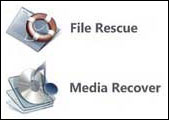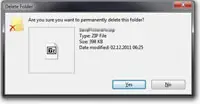Computers and the functions they provide are continuously improving. Because of how powerful and easy technology has become, many people take it for granted. However, it is important to remember that a computer can wear out and fail, and the hard disk is the most vulnerable component in the machine.

A few common types of problems arise, and luckily, a remedy exists for each one. This article explains the common problems and the best ways to fix the situation.
Maintain multiple backups for added protection
It is vital to have at least one backup, and strongly suggested to have two. Having multiple backups, stored in separate locations, provides an added layer of protection for your data and can mean the difference between a minor hiccup and an absolute disaster.
Provide yourself with a margin of safety. Take it a step further and have two regular backups that use different technologies. This way, if one backup fails, you have a secondary backup you can use. Depending on the sensitivity and importance of your data, more complex backup methods can be used as well. From a consumer standpoint, having 1-2 backups will usually suffice.
Common problems that cause data loss
It is important to understand the types of problems that plague hard drives. Different types of utilities address different problems. There is no universal utility that can repair all types of problems.
1. Files are missing or they were inadvertently deleted

If this is the only problem, it is likely that the files are still recoverable, even though they are not listed within the directory.
A computer will sort and organize files on the hard drive in various directory structures. Most times, the intricate details are hidden from the user. When you open a file, the computer first looks up the file in the directory, finds out exactly where the file is located, and directs the hard drive to go to that physical position to reads the file.
If that directory is missing or damaged, it appears as though the file is missing. If you deleted a file, the computer removes it from the directory but the hard drive still has the file; the space is just marked for re-use.
The good news is that the file still exists, but you may need a special program or software to assist in the recovery of the file, as you need to access the file without first going through the directory structure. Since the directory system is constantly in use, directory damage is a common problem and many utilities exist to help resolve such issues. These utilities can often recover files that have been dragged to the recycle bin/trash and then emptied. Under the right circumstances, they can restore files that are not shown in the directory for other reasons as well.
2. System is infected with a virus or other malware

Once a computer has been infected with a virus, anything can happen. A virus can hide itself so cleverly that it impossible to detect, but it may be rifling through your stuff, looking for credit card numbers, bank accounts, and other pieces of highly confidential and valuable information. Or, it can delete as many files that it wants.
One of the worst examples of an attack is the Stuxnet virus. Considered cyber-warfare, an enemy country used a virus to attack Iran’s nuclear enrichment program, causing millions of dollars in damages. It was deployed and spread just like any malware that can attack your computer, but designed to attack only very specific types of equipment.
Remember, a backup is important. It is also extremely important to have an updated virus scan. If you are not using a virus program now, you need to get one.
3. Mechanical problems with the hard drive
A hard drive is a mechanical device, meaning the mechanism itself can wear out and/or fail. Perhaps the arm on which the head is mounted has slightly moved out of alignment or the mechanism that positions the head has failed.
In this case, software utilities offer little help since the mechanism can no longer read or write accurately. The drive will not boot and no software utility can change that.
Recovery utilities assume the disk mechanism is intact and the problem is with the data stored on the drive. If this is not valid and you do not have a backup, your only choice is to head to one of the dedicated hard drive recovery services — the ones that charge upwards of $1,000 to recover information from the drive. These problems can strike any operating system.
If no mechanical dysfunction is present on the drive, you may be able to recover or repair any damaged or deleted files by using a file recovery program.
Solutions for when you do not have a backup
Assuming you have physical possession of the hard drive, you can attempt to repair it, either manually or with the help of a software application. If you decide to use a program to help, be sure to use a piece of software with proven results. Lifehacker.com published an article about free data recovery tools, some of which are detailed below as well.
Data Recovery Programs for Windows

Several applications exist for Windows operating systems. Prices generally range from $50 to $90 or so. Since this is a common problem and it is something that a good utility can fix quickly, this can be a good investment.
- Data Recovery Pro – This is a leading product from ParetoLogic. It provides a user with the ability to recover deleted files, emails, and email attachments. One of the helpful features it provides is the ability to perform a search for a keyword or phrase within a lost document. (Read more…)
- Stellar Windows Data Recovery – This product enables a user to recover information from formatted, corrupt, and even hard drives that do not boot. It has been commended for its ease of use, ability to scan quickly, and its effectiveness, so most people have no problem paying for this product. (Read more…)
- Recuva – One of the leading free programs, Recuva also helps recover lost information and files. While it helps recover files, it can also securely and permanently delete files or information as well. (Read more…)
Data Recovery Programs for Macintosh

Developers have also created programs to assist with information recovery on Macintosh computers. Again, the cost will likely be in the $50 to $90 range. Generally speaking, Macintosh computers are not as common and do not have as many experienced support techs. Therefore, if you encounter a data loss problem on a Macintosh system, a program like this becomes almost critical to recover your information without spending an astronomical amount at a specialist.
- Stellar Macintosh Data Recovery – Much like the Stellar Windows Data Recovery program, this version has many of the same features and is exclusive for Macintosh computers. Reviewers of this product claim it to be powerful at recovering lost information.
- Stellar Macintosh Photo Recovery – Created to recover image and video files, this program scans for corrupted files and displays thumbnails of the files it found. It then attempts to recover any of the found files. Positive reviews suggest this program has recovered more than 10,000 images in a single session.
- TestDisk – Similar to Recuva, this application is free to use. Another benefit is that it is compatible on multiple operating systems, including Windows, Linux, and Mac.
Whether you have a Windows computer or a Macintosh computer, it is strongly advised to have at least one backup in place. While manual backups are effective, they leave room for human error (forgetting). Setup automatically scheduled backups and perform manual updates for additional security.

